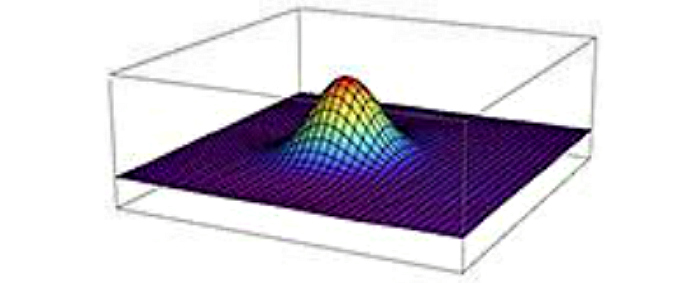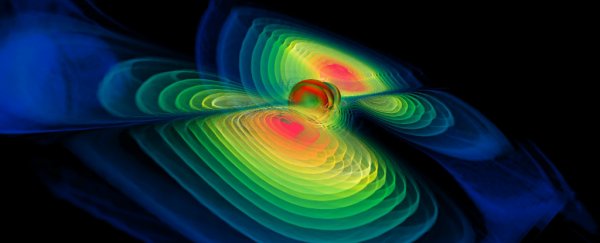For the first time, theoretical physicists have calculated the precise frequency of specific gravitational wave signals that would have emerged fractions of a second after the Big Bang.
Just like we had to figure out the frequency of the Higgs boson before scientists could detect it, this means scientists can now start to track down the signals of long-lost cosmological phenomena called 'oscillons', allowing us to peer back further into the Universe than ever before.
Gravitational waves were predicted by Albert Einstein back in 1916, but it wasn't until last year that their existence was confirmed by scientists.
These waves are different to all other waves that emanate through space, and they give us a whole new way to study the Universe.
That's because as gravitational waves travel through the Universe, they actually shrink and stretch the space-time continuum, distorting the geometry of space itself.
All accelerating masses are predicted to emit gravitational waves, but the waves are so hard to pick up that so far we've only been able to detect them when the source is extremely large - such as the merging of two massive black holes.
But as we get more sensitive tools, it's predicted that we'll be able to 'listen in' to gravitational waves and use them to find out more about the birth of the Universe as we know it.
If we know what we're looking for, that is.
To give scientists an idea of what they should be looking for in all the vast blips and noise of the Universe, a team of theoretical physicists from the University of Basel in Switzerland have been researching what's known as the stochastic background of gravitational waves - the intensities and frequencies of a range of gravitational waves that would have been emitted after the Big Bang.
The idea is that, once we have a few signals to hunt for, they can then be tested experimentally to confirm whether they actually exist.
So what do gravitational waves from the Big Bang look like?
To understand that, we need to understand what is thought to have happened in the very early Universe.
Just a few fragments of a second after the Big Bang occurred, everything in the Universe was still very small dense and hot. "Picture something about the size of a football," said lead researcher Stefan Antusch.
That tiny Universe only existed for an incredibly short period of time, but crammed into that tiny space, physicists think the Universe was dominated by a hypothetical particle known as the inflaton.
These inflatons underwent intense fluctuations, sometimes forming clumps that caused them to oscillate in localised regions of space.
These regions are known as 'oscillons', and the researchers showed that they would have blasted out such strong gravitational waves that we should still be able to detect them today.
"Although the oscillons have long since ceased to exist, the gravitational waves they emitted are omnipresent - and we can use them to look further into the past than ever before," said Antusch.
 University of Basel
University of Basel
Using numerical simulations, the team has now been able to calculate the precise shape of the oscillon's signal, pictured above. The signal should appear as a distinct peak in the otherwise broad spectrum of the stochastic background of gravitational waves.
That makes it a good blip to search for if we want to get a better understanding of the Universe's earliest moments.
"We would not have thought before our calculations that oscillons could produce such a strong signal at a specific frequency," Antusch explained.
The calculations, of course, are the relatively easy part. Now, experimental physicists must take this predicted signal and try to identify it using gravitational wave detectors, such as LIGO.
But there have been many strange signals calculated by theoretical physicists that have gone on to be confirmed by experiments, and changed our understanding of the Universe forever - such as the Higgs boson.
We're standing at the dawn of a new era in gravitational wave physics, and we say bring it on.
The research has been published in Physical Review Letters.
